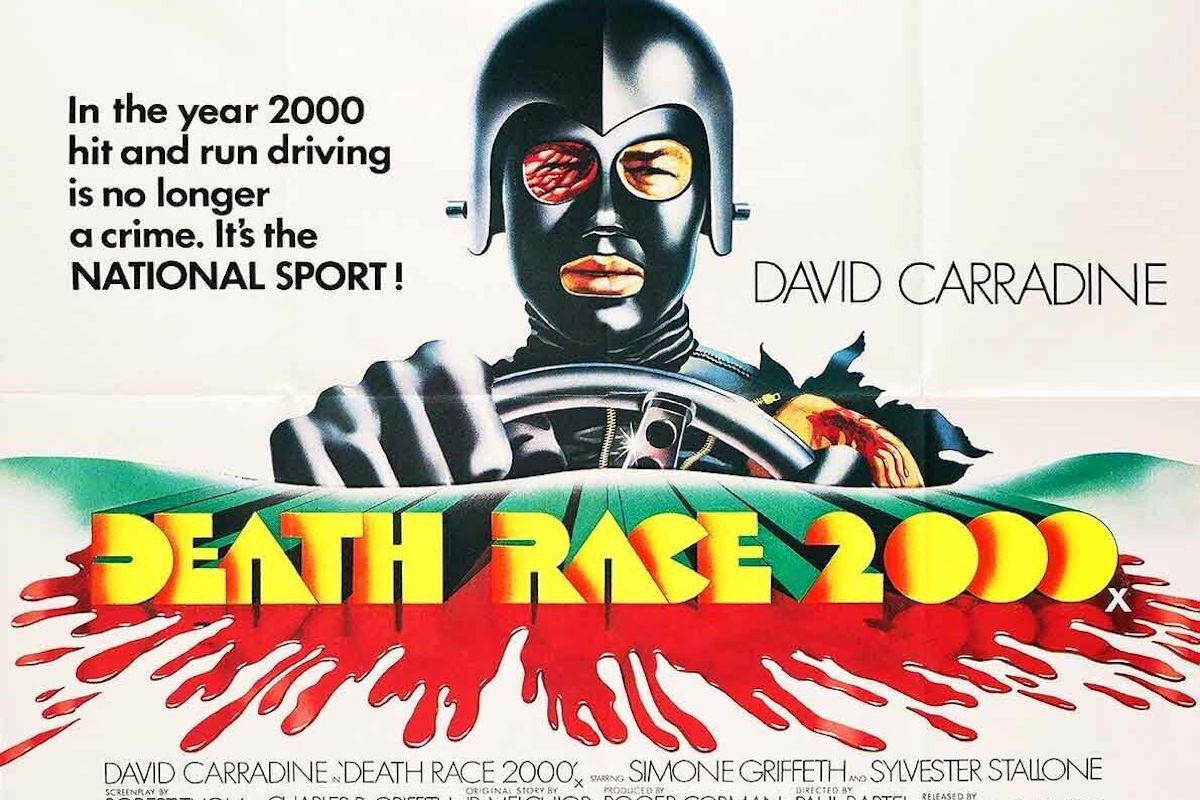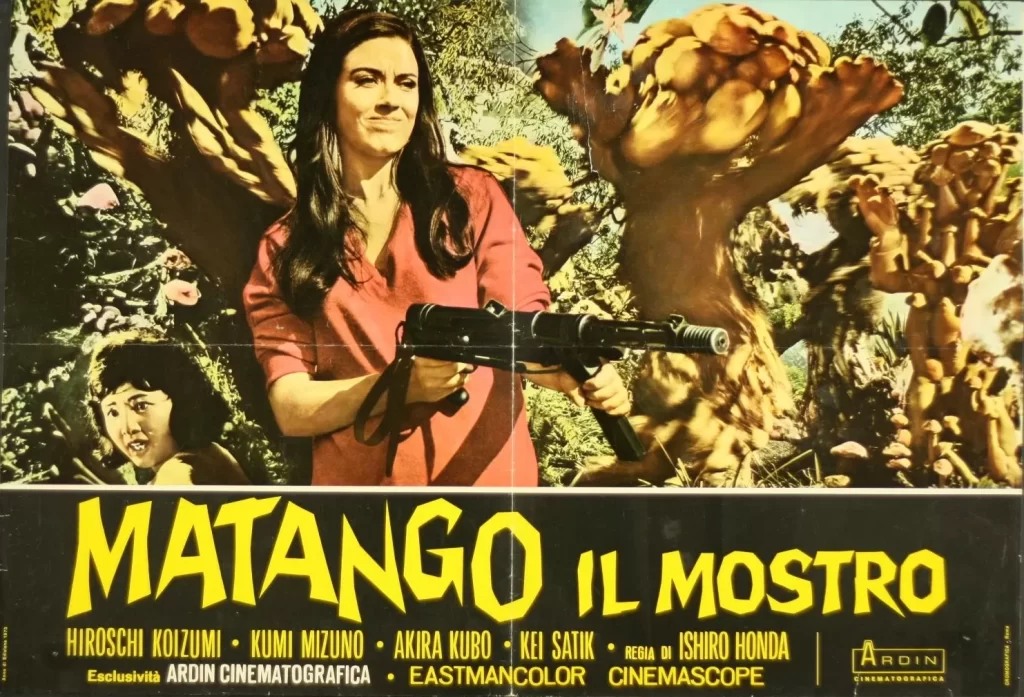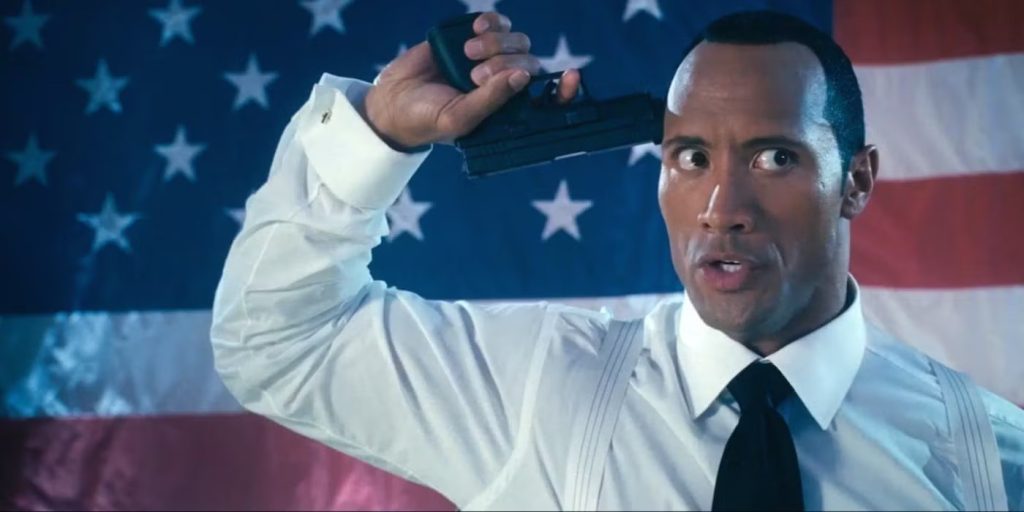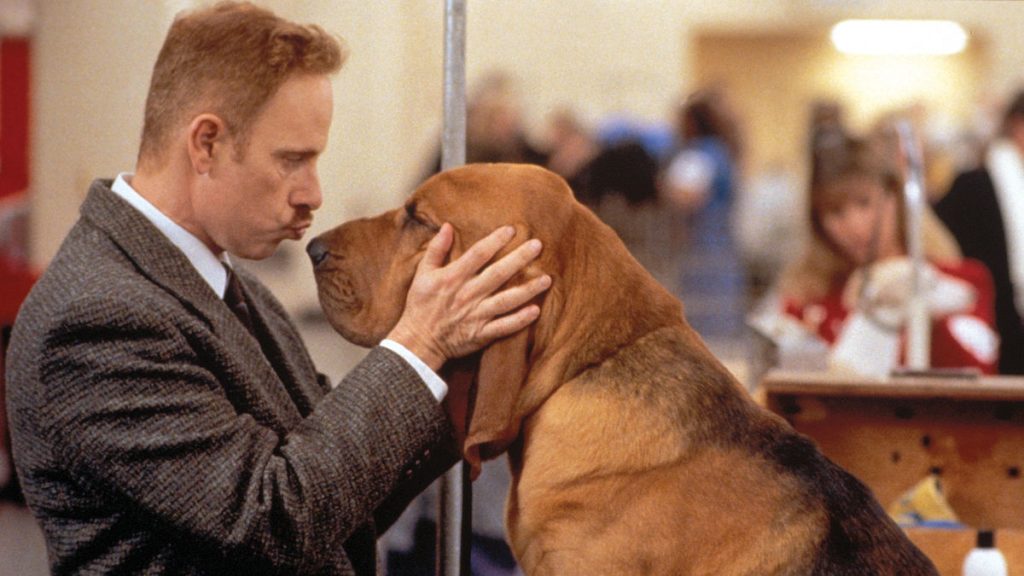“Roger’s operation is an exploitation operation on almost every level. He exploits directors, he exploits writers, he exploits people in the crafts who are trying to get established, but we are also exploiting Roger.” –Paul Bartel in Roger Corman: Hollywood’s Wild Angel
When Paul Bartel signed on to direct Death Race 2000 for Roger Corman’s New World Pictures, he had but one feature to his name – 1972’s Private Parts, produced by Roger’s brother Gene – and two underground shorts he wrote and directed in the late ’60s. As a tryout, and to see how Bartel handled car chases, Corman had him direct second unit on 1974’s Big Bad Mama, in which he also briefly appeared unbilled. Over the next few years, Bartel became a familiar face in New World’s output, but he more than proved his worth to the company with Death Race, which was made for about half a million dollars and had returned that ten times over by the time Bartel was interviewed for Hollywood’s Wild Angel. That he didn’t personally see any of that windfall goes unspoken, but Bartel is justly proud of directing New World’s “most successful film to date.”
There are many reasons why audiences flocked to Death Race when it was released 50 years ago, starting with its can’t-miss premise: a cross-country road race undertaken by bigger-than-life characters in outrageously decorated vehicles (with nicknames like “The Monster,” “The Bull,” and “Buzz Bomb”) who score points by running down pedestrians. Then there’s the cult-friendly cast headed by David Carradine, a pre-Rocky Sylvester Stallone, and Warhol superstar Mary Woronov. What gives it an extra kick is the political subtext; its setting is a futuristic society where the United States has become the United Provinces of America and is run by a repressive regime called the Bi-Partizan Party, which uses the Trans-Continental Road Race to keep the masses entertained. On its face, it seems an attempt to ape the bigger-budgeted Rollerball, but that came out two months later, making this one instance where Corman was ahead of the curve. (He repeated the trick in 1993 when Carnosaur beat Jurassic Park to theaters by three weeks.)
Scripted by Robert Thom and Charles B. Griffith (whose association with Corman stretched back to his early days as a director) and based on a short story by Ib Melchior, Death Race gets right to the action, briefly sketching in the rivalries between the five drivers. In addition to Carradine’s Frankenstein (the returning champion), Stallone’s Machine Gun Joe Viterbo (the perennial upstart), and Woronov’s Calamity Jane, there’s also the Nazi-themed Matilda the Hun (Roberta Collins), and decadent Nero the Hero (Martin Kove). All are introduced in quick succession by enthusiastic color commentator Junior Bruce (Don Steele, who played similar roles in Ron Howard’s Grand Theft Auto and Allan Arkush’s Rock ’n’ Roll High School), whose chummy co-host is the pricelessly named Grace Pander (Joyce Jameson), to whom just about everybody is “a dear friend of mine.”

Once the Race is underway, other aspects of life in the U.P. of A. come to light, such as the existence of a small but persistent resistance. They’ve even managed to infiltrate the Race since their leader’s granddaughter Annie (Simone Griffeth) is Frankenstein’s new navigator. (Seems navigators have the life expectancy of your average Spinal Tap drummer.) It’s through Annie’s eyes that the inner workings of the Race – including events like “euthanasia day” at the geriatrics’ hospital – are revealed, along with Frankenstein’s secrets. While he speaks in a robotic monotone and wears a rubber mask to hide his scarred visage, he sheds both for her benefit, but the mask goes back on whenever he’s in character.
In spite of Corman’s attempts to cut down on the comedy Bartel injected into the film, plenty of satirical touches remain, like the billboard that reads “Smoking Is Good for Your Health.” And the scene where Grace interviews the widow of the Race’s first fatality is savagely prescient in light of how reality TV has evolved. The most consistently funny gag, though, is the scapegoating of the French for the mishaps that occur along the route. You don’t need to squint hard to spot the modern-day parallels to Race officials changing the narrative in real time, telling racers and viewers alike not to believe what they’ve seen with their own eyes.
Realizing he’d caught lightning in a bottle, Corman wisely let Death Race 2000 stand on its own, although he did let Joe Dante and Allan Arkush borrow scenes for 1976’s Hollywood Boulevard, in which Bartel played a temperamental director. Decades passed before Corman produced a follow-up (2008’s Death Race, which spawned a franchise four films deep) and his own competing sequel (2017’s Death Race 2050). As for Bartel, he made one more car-chase film for New World (1976’s Cannonball) before definitively staking out his own territory. One can only stand to be exploited for so long.
“Death Race 2000” is out of print on Blu-ray, with the Shout! Factory edition fetching high prices on the second-hand market, but it is streaming in plenty of places where people like it violent, violent, violent!



